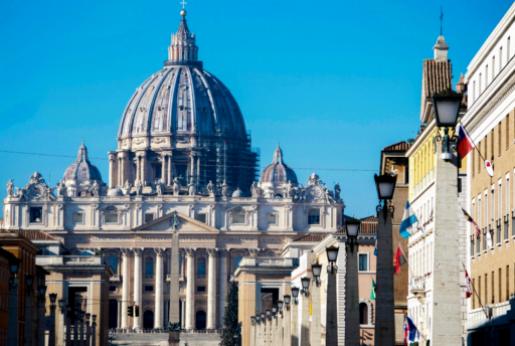St. Peter's Basilica in Vatican City is renowned for its architectural grandeur and artistic beauty. The basilica is home to stunning features such as Bernini's Baldacchino, the impressive dome, intricate facade, and hidden treasures in the Vatican Grottoes. Each of these elements offers a unique glimpse into the history, artistry, and engineering marvels that make St. Peter's Basilica a must-visit destination for travelers and art enthusiasts alike.

Bernini's Baldacchino: A Baroque Marvel
At the center of St. Peter's Basilica in Vatican City stands Bernini's Baldacchino, a stunning Baroque masterpiece that is as much a work of art as it is a feat of engineering. Designed by Italian artist Gian Lorenzo Bernini in the 17th century, the Baldacchino is a towering bronze canopy that rises over the high altar of the basilica. Adorned with intricate details and symbolic imagery, the Baldacchino is a true marvel of Baroque design and craftsmanship.
Standing at over 90 feet tall, the Baldacchino is supported by four massive spiral columns that are each made from a single piece of bronze. The columns are intricately decorated with twisted vines, cherubs, and other decorative elements that reflect the grandeur and opulence of the Baroque period. At the top of the Baldacchino is a large crown of thorns that symbolizes the sacrifice of Christ and serves as a reminder of the importance of faith and redemption.
The Baldacchino is not only a stunning work of art, but it also serves a practical purpose within the basilica. In addition to creating a focal point for the high altar, the Baldacchino also helps to define the sacred space of the sanctuary and provides a sense of intimacy and grandeur for the worshippers who gather there.
Overall, Bernini's Baldacchino is a true masterpiece of Baroque art and architecture that continues to awe and inspire visitors to St. Peter's Basilica to this day. Its intricate design, symbolic significance, and sheer scale make it a must-see for anyone interested in the intersection of art, architecture, and religion.
The Dome of St. Peter's: Engineering Feat of the Renaissance
The Dome of St. Peter's Basilica is regarded as one of the most impressive architectural feats of the Renaissance period. Designed by Michelangelo and completed by Giacomo della Porta and Domenico Fontana, the dome stands at 448 feet tall and is the tallest dome in the world. The construction of the dome required innovative engineering techniques and materials, such as a double-shell construction method and the use of lightweight materials to reduce the load on the structure. The dome's design also includes a lantern at the top, which allows natural light to illuminate the interior of the basilica. The Dome of St. Peter's continues to inspire awe and admiration for its beauty and technical achievement.
St. Peter's Basilica Facade: Symbolism in Stone
St. Peter's Basilica Facade: Symbolism in Stone
The façade of St. Peter's Basilica is a magnificent display of symbolism carved into stone. The central balcony on the façade, known as the Loggia of Benedictions, is where the Pope delivers his blessings to the crowds gathered below. The statues adorning the façade represent various saints and biblical figures, each carrying their own significance and meaning. The grandeur of the façade reflects the power and authority of the Catholic Church, while the intricate details in the sculptures convey religious teachings and beliefs. The façade of St. Peter's Basilica is not just a work of art, but a symbol of the faith and traditions of the Catholic Church, preserved in stone for generations to come.
The Vatican Grottoes: Hidden Treasures Below the Basilica
As visitors descend below the awe-inspiring St. Peter's Basilica, they are greeted with a hidden world known as the Vatican Grottoes. These underground chambers hold a treasure trove of historical significance and religious artifacts that have been preserved for centuries. From the tombs of past popes to intricate mosaics and sculptures, the Vatican Grottoes offer a glimpse into the rich history and artistry of the Catholic Church. Exploring these hidden treasures below the basilica is a truly unforgettable experience, allowing visitors to delve deeper into the heart of one of the world's most iconic religious landmarks.
